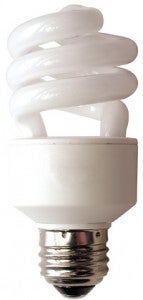The new light bulbs contain heavy metals
Published 9:57 am Thursday, November 3, 2011
Column: Randy Tuchtenhagen, Solid Waste Officer
There has been much discussion about the CFL light bulbs. CFL stands for compact fluorescent light, and they are about the same size as the mushroom type incandescent bulbs.
The incandescent bulbs were neither toxic nor considered a pollutant, but a CFL or fluorescent of any shape contains mercury lead, tin or other heavy metals and should not be thrown into the garbage.
Whether the CFL bulb has a threaded base or is a long tube such as the T12 or popular T8, it contains mercury. Now that we have made the switch to CFL lighting, guess what? There is a new light bulb called LED. I’ll get to that in December.
CFL lighting most likely will be with us for many years so we need to know what to purchase, how to use them and how to handle the disposal of all fluorescent light bulbs. The basic construction of fluorescent or CFL lighting is about energy efficiency, cost and the potential for pollution.
If a CFL or what we call fluorescent light bulb breaks, it is recommended that you open doors and windows to ventilate the mercury gas that has been released. The glass and base can be thrown into the trash since the main hazard, mercury, has already been released.
A burned-out CFL or fluorescent bulb disposal option is the hazardous waste collection program Freeborn County operates seasonally.
A commercial business should contact the Environmental Services Office for disposal options since the hazardous waste program can only take items from households. Costs to dispose of bulbs is one reason the hazardous waste collection program does not take them from a business. Also, the hazardous waste program is not licensed to accept commercial waste. Like old car tires, electronics and other garbage, it costs money to transport and process any waste item.
However, stores often take old fluorescent bulbs. Ask about it when purchasing new ones.
Did you purchase the correct CFL or fluorescent? There are different lighting types and you may not be pleased with your new CFL light bulb if you purchased the wrong bulb. It’s probably the biggest complaint we hear when people switch to a CFL.
Like incandescent bulbs the choices are soft white, dimmable, clear or daylight. Your reading lamp may have the wrong CFL type if you cannot read the evening paper like with the old bulbs. Some stores may only have one choice on the shelf so pass them up and shop elsewhere for more options if it’s not the correct bulb for the use you intend.
Want your CFL and fluorescent bulbs to last longer? Do the twist. Hold the base, not the glass, when inserting or removing so it won’t break. Use only labeled three-way bulbs in a three-way lamp.
Don’t dim a CFL bulb from a dimmable switch or put CFL bulbs into enclosed ceiling fixtures unless they are labeled for that kind of use. Excessive heat or cold are the biggest killers of CFL and fluorescent bulbs, and they could burn out quickly. It’s your responsibility to choose the correct bulb. Make a wise shopping choice.
Randy Tuchtenhagen is the solid waste officer for Freeborn County Environmental Services.



